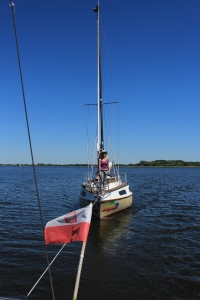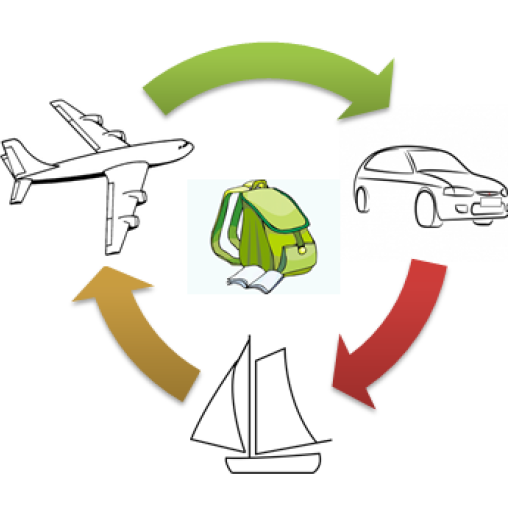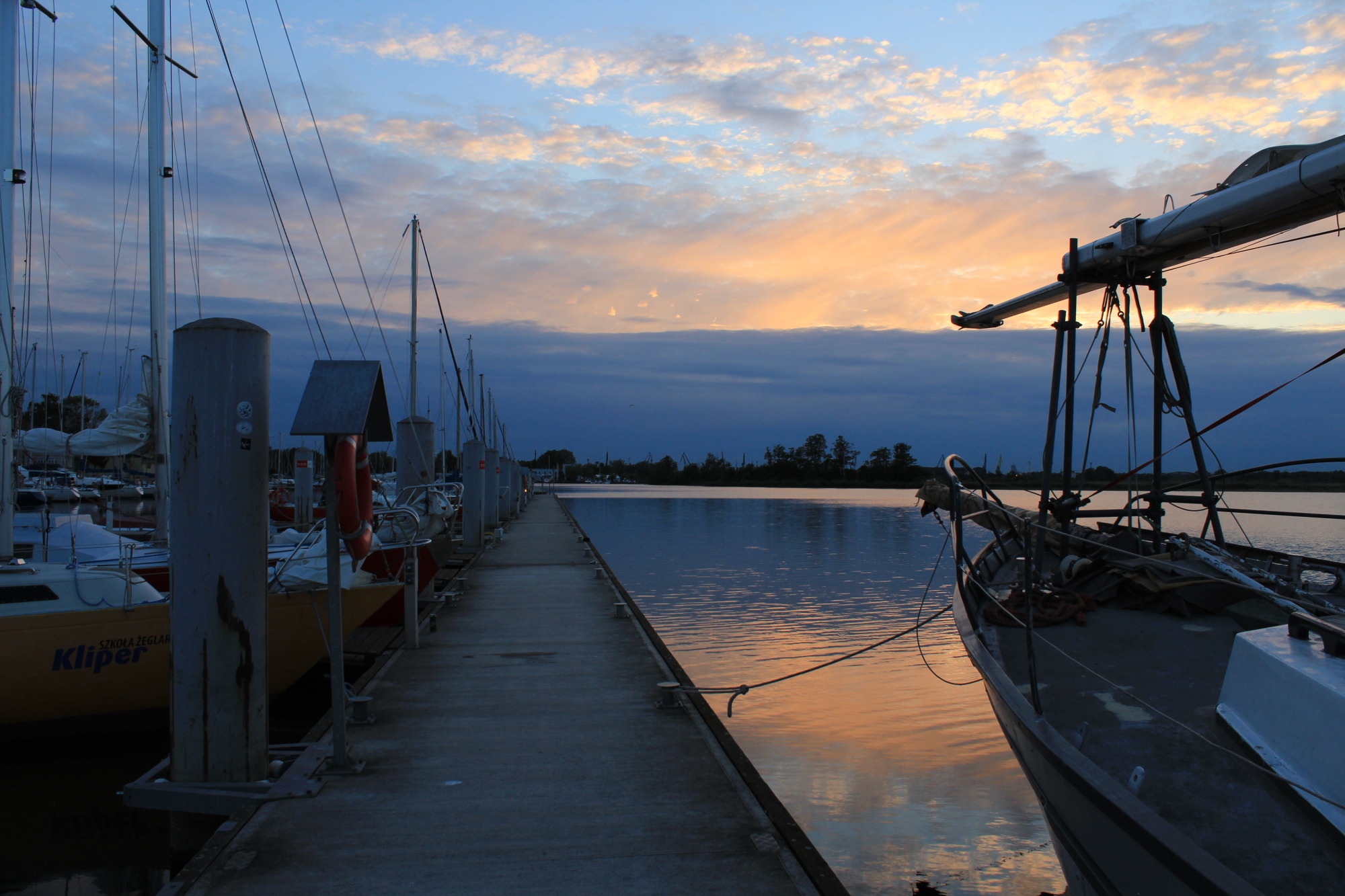– I like that you are not a chicken.
I looked at Krystian a little bit surprised. Does he really think that? Just because I did not say no when he asked if I wanted to try and sail? I was standing holding tiller and trying to understand what is going on with the boat and sails. Well, at the beginning I was not getting very far, but what else could I do? If you do not try you never learn and you never know if you like something or not.
– Just keep us away from the nets over there.

I almost had a heart attack immediately imagining that I am taking us all straight into the middle of fishing fields and we all are going to sink! Some bizarre pictures of dead fishes and nets around our necks went through my head. Perhaps I still was not quite sober and with lack of sleep my imagination went on a wild run.
The weather on our second day was not great –quite nice at the beginning but then it started raining. We have decided to do our sailing training in June with a hope the weather will be nice and settled – sunny and warm, but June can be fussy. On a whole – we were incredible lucky getting soaked just once during the whole week. The weather can change very quickly on water – it is almost like in the mountains – you can expect everything.

I did not sleep very well last night – all the excitement and evening spent with Daniel, sea shanties and few beers did not contribute towards good night sleep. But you live once and sometimes it is good to lose some sleep in order to spend the time with someone interesting. I was trying really hard this morning not to let my eyes close during Krystian’s lecture as this would be extremely rude. He was talking about the Regulations on inland waterways and Meteorology – both quite important and at the same time rather difficult to remember. Especially Meteorology – types of clouds, pressure, warm and cold fronts and my favourite – Beaufort wind force scale! Try to remember all this within a short time and I can guarantee – you will go bonkers!

There are two main manoeuvres everyone who wants to sail must master – tacking and jibing. The thing is the boat cannot sail directly into the wind – if the boat is facing with its bow (the front part of the boat) the wind, it will stop moving all together, you will not be able to sail. This is the no-go/in irons zone on points of sails I was writing about here. You need to try and catch the wind (and the wind is so changeable!) on the side of your sails – you have to have it on a side, blowing from the front or back but slanted, so your sails can use it to move the boat.

In order to get from one place to another you need to change the positon of your boat as required. So imagine that your destination lies upwind – if you want to get there there is a high probability you will have to tack back and forth several times. Sailing the boat is not like driving the car – there is no comparison whatsoever. It is so different since in order to get somewhere you must observe what your sails do, in which direction the wind is blowing, adjusts the position of the boat to the one you want so you are able to get where you desire or just simply – stay on a course.

The wind changes and the course of the boat too – so tack the boat! But to do this well, you need some speed. Tacking is trying to push boat from one side to the other by crossing the line of the wind with its bow, basically you need to go from one tack close-hauled to the close-hauled of the opposite tack – easy to say, more difficult to do. You must place a boat in a good positon – make sure you are in close-hauled and try to steer the boat towards the wind. As you have some speed, you will be able to push your boom on the opposite site – when that happens, try to keep your boat in a close-hauled of the opposite tack for a moment, before trying to do anything else. And there you go – you have changed your course!


Why the speed is important? You might get stuck in the middle of your tacking – you are crossing the “no-go” zone after all. But there is a solution – simply push the boom out and get the boat going backwards – you will be able to catch some wind and position the boat so you can try tacking again!
Tacking is a very basic skill – you will get the handle of it eventually – I did after doing it like hundred times and believe me – if I can do it, you can too!

Jibing is a little different – the aim is to push the boat from broad-reach of one tack to the broad-reach of the opposite tack. In this case you have the wind blowing from the back on a side but the speed necessary to make jibing does not have to be as great as with tacking. Your stern, the stern of the boat must be put through the wind, cross the wind, but remember, with jibing it does happen very rapidly and this manoeuvre is very dangerous – someone could be hit by the boom and land in water, losing consciousness. When you tacking, the boom is moving slowly, when you jibing the boom is very, very fast! Marcin almost lost his glasses, when I did an unexpected jibing!

We were doing tacking all day on our second day, and I was still trying to establish the direction of the wind, moving my head around like a dog, listening for the familiar sound in my ears. It took me more than 3 days to really get into tacking, but I needed to understand this before being able to do any jibing (hence – Marcin’s glasses). We spend few hours on a boat, sailing and about 6 o’clock in the afternoon I felt totally exhausted. Sailing is a hard work, especially hard on your hands, I was wearing my leather gloves later on, as my hands were suffering from pooling the ropes, but I would not trade this physical labour for anything else, as the sense of freedom and happiness when we were leaving marina was one of the best feelings I have ever had. Life can be simple, just find out what is making you happy and then do whatever it takes to do it.


Great post!
Have a nice weekend darling xx
http://www.travelera.es
LikeLike
Thanks! Sailing is fantastic 🙂
LikeLike